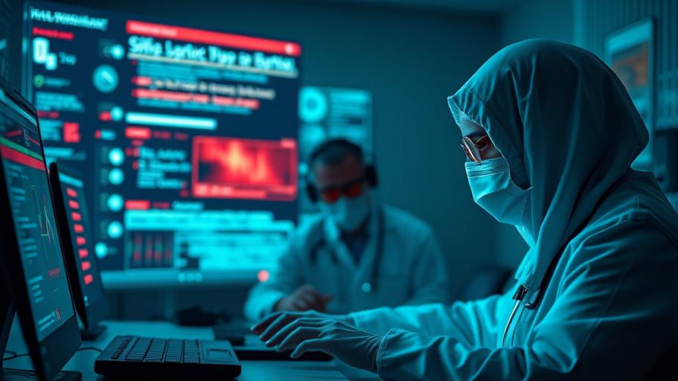
Summary
A ransomware attack on Access Sports Medicine & Orthopaedics compromised the data of over 88,000 individuals. The attack, discovered in May 2024, exposed sensitive information like Social Security numbers, medical records, and financial details. While Access Sports claims no misuse of the stolen data, the incident highlights the increasing vulnerability of healthcare organizations to cyberattacks.
** Main Story**
Access Sports Data Breach: A Deep Dive
The healthcare industry finds itself increasingly under siege from ransomware attacks. One such incident targeted Access Sports Medicine & Orthopaedics, a New Hampshire-based orthopedic services provider, compromising the sensitive data of more than 88,000 individuals. This article delves into the specifics of the Access Sports data breach, explores the broader implications for the healthcare sector, and discusses strategies to bolster cybersecurity defenses.
The Access Sports Incident: Unraveling the Attack
Access Sports discovered suspicious network activity on May 10, 2024. A subsequent investigation confirmed unauthorized access to files containing personal and health information. The compromised data included names, Social Security numbers, dates of birth, financial information, medical records, and health insurance details. A ransomware group known as Inc Ransom claimed responsibility for the attack, subsequently listing Access Sports on its dark web leak site and publishing the stolen data.
The Fallout: Impact and Response
Following the breach, Access Sports notified affected individuals and regulatory bodies, offering complimentary fraud protection services. Despite the organization’s assertion of no evidence of data misuse, the potential for identity theft and other fraudulent activities remains a significant concern. This incident underscores the critical need for robust cybersecurity measures in healthcare.
Ransomware in Healthcare: A Growing Threat
The Access Sports data breach is not an isolated event. Healthcare organizations have become prime targets for ransomware attacks due to the sensitive nature of the data they hold and the potential for operational disruption. The COVID-19 pandemic further exacerbated this vulnerability, as hospitals and medical facilities struggled to maintain operations while simultaneously adapting to new technologies and workflows. Cybercriminals exploited this situation, launching increasingly sophisticated attacks to maximize their potential profits.
Strategies for Enhanced Cybersecurity
Several key strategies can help healthcare organizations enhance their cybersecurity defenses and mitigate the risk of ransomware attacks:
Strengthening Defenses: Proactive Measures
- Multi-Factor Authentication: Implementing multi-factor authentication adds an extra layer of security, making it significantly more difficult for unauthorized individuals to access sensitive systems and data.
- Regular Software Updates: Keeping software and operating systems up to date is crucial to patch known vulnerabilities that attackers can exploit.
- Robust Firewall Protection: Employing strong firewalls helps prevent unauthorized network access and blocks malicious traffic.
- Intrusion Detection Systems: Implementing intrusion detection systems can help identify and alert organizations to suspicious activity on their networks, enabling a faster response to potential threats.
Employee Training: A Crucial Defense
- Security Awareness Training: Educating employees about cybersecurity best practices, including recognizing and avoiding phishing emails and other social engineering tactics, is paramount. Regular training sessions and simulated phishing attacks can help reinforce these crucial skills.
Incident Response Planning: Preparedness is Key
- Develop a Comprehensive Plan: Healthcare organizations must develop a comprehensive incident response plan that outlines the steps to be taken in the event of a ransomware attack. This plan should include procedures for isolating affected systems, restoring data from backups, and communicating with stakeholders.
- Regularly Test the Plan: Conducting regular drills and exercises helps ensure that the incident response plan is effective and that staff members are prepared to execute it in a real-world scenario.
Collaboration and Information Sharing: Collective Defense
- Sector-Specific Collaboration: Healthcare organizations should actively participate in sector-specific information sharing initiatives to stay informed about emerging threats and best practices for mitigation.
- Government Partnerships: Collaborating with government agencies, such as the Department of Health and Human Services and the Cybersecurity and Infrastructure Security Agency, can provide valuable resources and support for enhancing cybersecurity defenses.
The healthcare sector faces a continuous challenge to protect sensitive patient data in an increasingly complex cyber landscape. The Access Sports incident serves as a stark reminder of the potential consequences of ransomware attacks and the necessity of a proactive, multi-layered approach to cybersecurity. By implementing robust technical controls, providing comprehensive employee training, developing effective incident response plans, and fostering collaboration, healthcare organizations can strengthen their defenses and better protect themselves and their patients from these evolving threats. As of today, March 11, 2025, this information is current but could change due to the dynamic nature of cybersecurity threats and ongoing developments in the healthcare sector.


88,000 compromised? At this point, shouldn’t we just assume our medical data is already floating around the dark web and focus on proactive countermeasures? Maybe start with learning how to dispute fraudulent medical bills?
That’s a really important point about focusing on proactive countermeasures! Learning how to dispute fraudulent medical bills is definitely a practical step individuals can take. Beyond that, understanding your insurance coverage and regularly reviewing your medical records for accuracy are also helpful.
Editor: MedTechNews.Uk
Thank you to our Sponsor Esdebe
88,000? Maybe Access Sports should invest in carrier pigeons. At least then the data breach would involve birds, not bytes, and we could all admire the irony. Seriously though, this is beyond alarming!
That’s a thought! While carrier pigeons might be a fun (albeit slow) alternative, modern cybersecurity measures are definitely more practical for protecting sensitive data. The scale of these breaches is truly concerning, and highlights the need for constant vigilance and improved security protocols in healthcare. What steps do you think are most crucial in preventing future attacks?
Editor: MedTechNews.Uk
Thank you to our Sponsor Esdebe
88,000 individuals, you say? I wonder if “Inc Ransom” accepts payment in HSA funds? It seems like a fitting, if darkly ironic, way to settle the tab. In all seriousness, what’s the going rate for a soul on the dark web these days? Asking for a friend, of course.